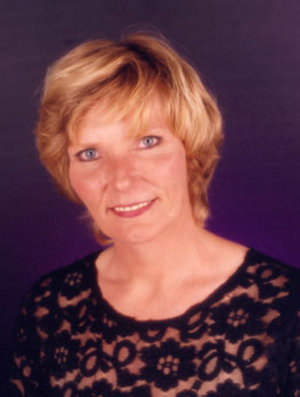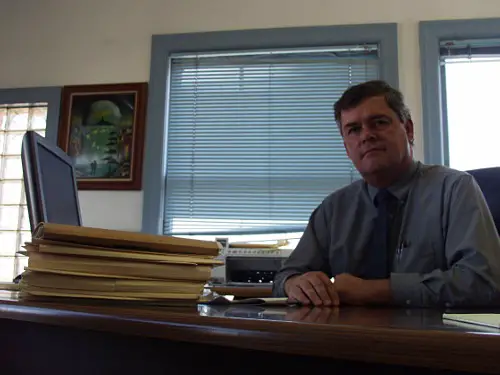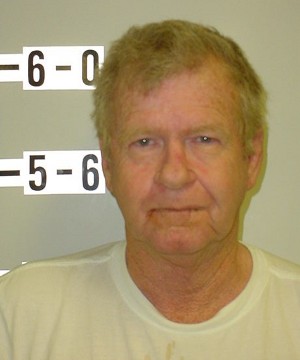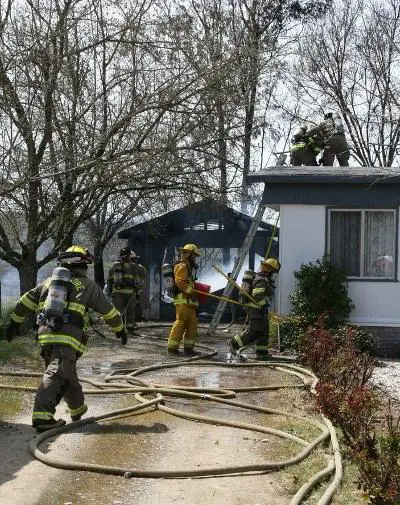- Elizabeth Larson
- Posted On
County's health officer discusses challenges, positives for public health
This year National Public Health Week is being observed April 6 through 12.
For officials like Dr. Karen Tait, MD, Lake County's health officer and head of the Public Health Division, it's a good time to talk with the community about its health issues and ways to be healthier.
Tait – whose first anniversary on the job coincided with the April 6 beginning of National Health Week – has a small staff to do a big job, covering a wide range of activities.
The Public Health Division is within the Department of Health Services, overseen by Health Services Director Jim Brown. Tait said her division is funded by a mix of federal and state funding, with some local realignment funds.
Public Health has 29 full-time employees, with 1.25 full-time positions – divided among three nurses – dedicated to communicable disease control activities, she said. There's no epidemiologist on staff, and Tait herself analyzes local health statistics.
Division activities include working to prevent communicable diseases, ensuring vaccinations are completed on schedule, promoting nutrition and dental care, providing screenings for various types of diseases, and inspecting food and sanitation systems. They also cooperate with the community, hospitals and emergency responders to prepare for public health emergencies.
Everyone multi-tasks to the extreme, she said.
“We're very interested and motivated, and we have very few resources,” she said.
Looking at the county's current health challenges, Tait lists among her concerns the rise in births to adolescent mothers, and the 17.2-percent rise in accidents resulting in significant injuries.
She said people in rural environments do have more accidents, with farm accidents raising that overall number, besides the area's regular number of roadway collisions.
There is some longterm planning officials can do to change some of those factors, but Tait adds, “You can't make the deer use crosswalks. There are just some things beyond our control.”
One big issue for Lake County is smoking and the resulting coronary heart disease and lung cancer. “Clearly we know that smoking is linked to these diseases,” she said, adding that asthma also is a resulting condition.
Smoking continues to be a public health concern all over the country. Tait said smoking rates seem to hover around 20 percent locally, and it's hard to get below that level.
She said California Department of Public Health findings regarding tobacco use show that, in 2008, statewide rates for smokers had a significant reduction of 13.3 percent among adults.
Numbers available in the California Department of Public Health's online database still show 2005 numbers, which showed an adult smokers rate of 17.9 percent in Lake County, compared to the mean rate of 23.3 percent reported the same year by California Breathing.
Both statistics, said Tait, put Lake County above the state's average, which is a concern.
Also above the state average is the number of local young people who smoke, rated at 17.4 percent as of 2006 statistics, compared to the statewide average of 15.4 percent. More dramatic, said Tait, is that 44.9 percent of Lake County's young people report smoking at some time, which she said indicates how much experimentation takes place with cigarettes.
She believes many young people smoke because of a still-glamorous image. Tait said so much is known about the harm that smoking does that it defies logic that anyone would choose to do it.
Public health officials also reported that statistics from the 2004-08 reporting period shows that Lake County ranks between 53 and 57 statewide for a number of health-related issues, including death from all causes, chronic lower respiratory disease, chronic liver disease and cirrhosis, suicide and drug-induced deaths.
Cancer: A “complex” issue
Then there's the issue of cancer itself and its impact on Lake County's population.
Various reports have shown high cancer rates for the county.
A 2008 health status profile under the Healthy People 2010 program ranked Lake County as No. 2 statewide for the number of deaths per capita for all cancers, or 208.4 persons per 100,000, which was a 5.5 percent reduction from the 2001-2003 rate of 220.6.
That same report also ranked Lake County No. 4 for lung cancer deaths, or 66.3 per 100,000, down 8.6 percent from the 72.5 per 100,000 recorded in the 2001-2003 cycle. All numbers are age-adjusted.
Breast cancer and prostate cancer numbers ranked the county No. 13 in the state, and colorectal cancers ranked it No. 9.
Cancer is a tricky topic, and Tait points to the difficulty in understanding it.
“I think the safest thing to say about it is it's a complex issue,” she said.
There are many factors that impact cancer rates, she said.
“I think you have to look at what is the origin of cancer,” she said.
Cancer has both a genetic factor as well as a long time line. For that reason, she said it's really impossible to draw a connection between where someone lives now and the causes of their cancer.
In Lake County, many people come from other areas to retire. For that reason, Tait said it's hard to know how the reported cancer rates were influenced by environment, or where on the time line a person's cancer is when they come here.
“People do die from cancer at a higher rate here than they die of some other things that might kill them,” she said. “It becomes a very complex issue.”
Other influence on the cancer rates may be access to health care and socioeconomic factors that might affect a person's state of health. “We have a fairly high poverty rate here in Lake County,” Tait said.
She emphasizes that the public shouldn't draw the wrong conclusion that they're going to die from cancer because they live in Lake County.
“That would be a big leap,” she said, pointing to Lake County's positive environmental factors, including its very clean air.
Get out and exercise
In many areas, Tait said, the county is showing public health improvements. Those include showing better comparisons with other areas on such issues as incidences of diabetes, Alzheimer’s disease, influenza/pneumonia and infant mortality.
Improving access to health care is one of Tait's goals for this geographically isolated area. “We have to
find creative ways to make sure people do have access to health care,” she said.
That means not just the basics but also the ability to get specialty care such as is provided by cardiologists, oncologists and other specialists.
Tait emphasizes healthy lifestyles as a means of preventing disease.
“So much of our progress in public health is making the right lifestyle choices,” she said. “In the case of lifestyle, getting enough exercise and not smoking are my two favorite topics.”
Exercise, she points out, “is probably the best thing a person can do for their health in so many ways it's impossible to list them all.”
Some of the notable benefits include preventing obesity, fighting depression, preventing dementia and bringing down the number of lipids – which include cholesterol – in the blood. She notes that it's all speculation why exercise works.
Tait recommends 20 to 30 minutes of exercise a day. She particularly likes exercise videos, which she said help people pace themselves while pushing them to do more than they thought they could.
“The key is to do it regularly, at least five times a week,” she said, and to look at exercise like medication, taking it in prescribed amounts.
Tait is encouraged by a health attitude she sees here in Lake County.
She said she recently attended a community blueprint workshop and was impressed by the mindset of local residents, which she said was very much in sync with building a healthy community.
Tait said she considers it a ray of hope that Lake County's residents value their lifestyle and environment so much.
And, she added, it means she won't have to sell them on the concept of living healthy lifestyles.
E-mail Elizabeth Larson at This email address is being protected from spambots. You need JavaScript enabled to view it..

















